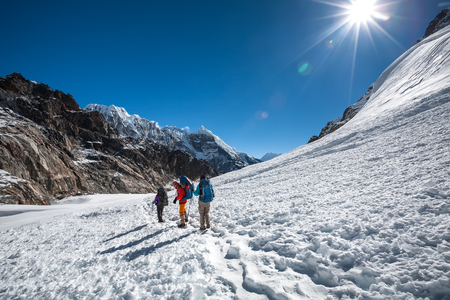1. Introduction to Koyna Valley and Its Trekking Heritage
Nestled in the heart of Maharashtra, Koyna Valley stands as a testament to the natural splendour and adventurous spirit of India’s Western Ghats. Renowned for its lush greenery, rolling hills, and the tranquil waters of the Koyna Dam, this region has long been celebrated as a prime trekking destination. Over the years, Koyna Valley has become an integral part of Maharashtra’s trekking culture, attracting not only local adventure seekers but also enthusiasts from across India. The valley’s well-marked trails offer breathtaking views of dense forests, cascading waterfalls, and rare wildlife, making every trek a memorable experience. For many, conquering the challenging terrains of Koyna is seen as a rite of passage—an opportunity to connect with nature and embrace the traditional spirit of exploration that defines Indian outdoor adventure. As environmental changes shape the landscape, understanding the unique heritage and significance of Koyna Valley is more important than ever for those who cherish its trails.
Observing Climate Change: Local Weather Shifts and Patterns
The Koyna Valley, nestled in the Western Ghats of Maharashtra, has long been celebrated for its lush green hills and ideal trekking climate. However, trekkers and local guides are increasingly noticing unusual weather patterns that point to the growing impact of climate change. The once predictable monsoon season now arrives erratically, with heavy downpours often followed by unexpected dry spells. Local villagers recall times when rain would start punctually in June and continue steadily, but recent years have seen rainfall extending into October or suddenly ceasing mid-season.
Changing Rainfall Patterns
Traditionally, the Koyna region experienced consistent and moderate rainfall during monsoon months. Now, bursts of intense rain lead to flash floods and landslides, making trekking trails unpredictable and sometimes unsafe. Many seasoned trekkers share stories of trails that were once reliable becoming muddy torrents overnight or river crossings turning impassable due to sudden water level rise. These changes not only affect trekking schedules but also put pressure on local communities who rely on tourism for their livelihoods.
Temperature Rise and Heat Waves
Another significant shift is the steady increase in average temperatures. Summers are becoming hotter, with daytime temperatures soaring above 35°C—conditions that were rare a decade ago. Even during winter treks, trekkers report warmer nights and early mornings. For instance, Mr. Ramesh Pawar, a trekking guide from Koynanagar, mentions, “We used to pack sweaters for March treks; now light jackets are enough.” Such temperature variations challenge both trekkers preparedness and the survival of native flora and fauna.
Seasonal Variation Observed by Trekkers
| Season | Past Weather Pattern | Recent Observations |
|---|---|---|
| Monsoon (June-September) | Steady moderate rainfall | Sporadic heavy showers & dry intervals |
| Winter (November-February) | Cool & pleasant temperatures | Noticeably warmer nights & mornings |
| Summer (March-May) | Occasional heat waves | Frequent extreme heat & longer duration |
Local Anecdotes: Voices from the Valley
Many local trekkers share how their planning routines have changed. Ms. Priya Deshmukh from Satara recalls her last summer trek: “We started early to avoid midday heat, but still struggled with exhaustion by noon.” Others mention needing to reschedule or cut trips short because of sudden storms or trail blockages caused by landslides. Such experiences highlight the importance of checking real-time weather updates and consulting local guides before setting out.
The changing climate in Koyna Valley is not just a topic of scientific discussion—it is a lived reality for trekkers and residents alike. Recognising these shifts is vital for ensuring safety while exploring this beautiful region, as well as respecting the challenges faced by local communities adapting to new environmental conditions.

3. Impact on Flora, Fauna, and Natural Trails
Koyna Valley, nestled in the Western Ghats of Maharashtra, is renowned for its rich biodiversity and lush forests. However, climate change has begun to visibly alter the regions ecological balance. Due to irregular monsoon patterns and rising temperatures, indigenous plant species such as teak, bamboo, and wild mango are facing stress, resulting in reduced forest cover and fragmented habitats.
The valley is home to several endemic animals like the Indian giant squirrel and Malabar pied hornbill. These species are now increasingly vulnerable as their natural habitats shrink and food sources become scarce due to changing weather patterns. The presence of invasive species is also growing, threatening native flora and disturbing the delicate ecosystem.
Traditional trekking routes in Koyna Valley have always been cherished for their scenic beauty and tranquility. However, frequent landslides during unexpected heavy rains and prolonged dry spells are causing soil erosion along trekking paths. Many local guides report that familiar trails have become hazardous or impassable at certain times of year.
For trekkers, this means an increased need for safety awareness and preparation. Erosion can expose sharp rocks and roots, making paths slippery or unstable, especially during the monsoon season. In addition, diminishing forest cover reduces shade along routes, increasing the risk of heat exhaustion and dehydration during treks.
To adapt to these changes, local trekking communities are collaborating with conservationists to mark new trails and restore degraded ones by planting native trees. It is essential for visitors to follow designated paths and respect advisories from local authorities to ensure both personal safety and protection of the valleys precious biodiversity.
4. Safety Concerns for Trekkers: Risks and Preparedness
Climate change has brought significant shifts to the trekking experience in Koyna Valley, introducing new safety challenges that trekkers must be aware of. The unpredictable weather patterns—such as sudden flash floods, unexpected landslides, and intense heatwaves—require a higher level of caution and preparedness among those exploring this beautiful region. In the Indian context, where monsoons can be extreme and temperatures can rise rapidly, understanding these risks is crucial for both beginners and seasoned trekkers.
New Risks Due to Climate Change
The following table highlights the main risks now faced by trekkers in Koyna Valley and the associated safety measures:
| Risk | Description | Safety Guidelines |
|---|---|---|
| Flash Floods | Sudden heavy rains during monsoon season can cause rivers and streams to overflow quickly. | Avoid river crossings during heavy rainfall; stay updated with local weather alerts; always have an escape route planned. |
| Landslides | Loose soil and rocks after rain make trails unstable, especially on slopes. | Stick to marked trails; travel in groups; avoid trekking immediately after heavy rains. |
| Heatwaves | High temperatures can lead to dehydration or heatstroke, especially during pre-monsoon months. | Carry adequate water; wear lightweight, breathable clothing; schedule treks for early morning or late afternoon. |
Preparedness Steps for Safe Trekking
- Check Local Updates: Always consult local forest department advisories before planning your trek.
- Packing Essentials: Carry rain gear, extra water, high-energy snacks, a first-aid kit, and a charged mobile phone with emergency contacts saved.
- Travel with Guides: Opt for registered local guides familiar with changing routes and safe evacuation procedures.
- Emergency Planning: Share your trekking plan with friends or family, and identify nearest medical facilities before starting your journey.
Cultural Considerations for Indian Trekkers
Trekking in India often means navigating diverse landscapes as well as respecting local customs. Be mindful of sacred sites along the trail, dress modestly as per rural Maharashtra norms, and engage respectfully with tribal communities in the Koyna region. Adhering to these safety and cultural guidelines ensures not only your wellbeing but also a positive experience for all involved in the trekking ecosystem.
5. Community Perspectives: Local Stories and Adaptation Strategies
The heart of Koyna Valley lies in its people, whose lives are closely intertwined with the landscape. Local trekking guides, villagers, and environmental experts have been vocal about the changes brought by climate change and how these shifts affect not only the trekking experience but also their livelihoods and traditions. Many guides share that unpredictable weather patterns have made it essential to revise trekking routes and schedules, prioritising safety and preparedness over spontaneity. Trekkers are now advised to consult local experts before embarking on trails, a practice deeply rooted in Indian values of community collaboration and respect for elders.
Villagers recount stories of how earlier generations could predict rainfall with accuracy based on traditional knowledge, which is now challenged by erratic climate behaviour. To adapt, communities have revived age-old wisdom, blending it with modern weather monitoring tools. This combination allows them to offer real-time updates to trekkers and ensure everyone’s well-being. The spirit of ‘Atithi Devo Bhava’ (the guest is equivalent to God) remains strong as locals strive to keep visitors safe, even as they themselves face new hardships.
Experts from regional environmental organisations highlight ongoing workshops aimed at educating both locals and tourists about sustainable trekking practices. These include water conservation, waste management, and respect for fragile ecosystems. Through joint efforts, the Koyna community is fostering resilience, echoing the Indian principle of ‘Vasudhaiva Kutumbakam’ – the world is one family. By sharing stories and strategies across generations and with visitors, Koyna Valley stands as a testament to India’s adaptive spirit in the face of climate change challenges.
6. Sustainable Trekking: Responsible Practices for the Indian Trekker
As climate change shapes the Koyna Valley’s landscapes and ecosystems, it is crucial for trekkers in India to embrace sustainable practices rooted in our rich cultural respect for nature. The Indian tradition of “Prakriti Puja” teaches us that every element of the environment—mountains, rivers, trees—is sacred. By integrating this ethos into modern trekking habits, we can minimize our environmental footprint and safeguard Koyna Valley for future generations.
Respect Local Flora and Fauna
Do not disturb native plants or animals during your trek. Stick to marked trails to prevent trampling on delicate vegetation. Refrain from picking flowers or fruits; remember, these are vital resources for local wildlife and communities.
Minimize Waste Generation
Carry reusable water bottles and food containers instead of single-use plastics. Always pack out what you pack in—leave no trace behind. Participate in “Swachh Bharat Abhiyan” by collecting any litter you encounter along your route, setting an example for fellow trekkers.
Support Local Communities
Choose local guides and eco-friendly homestays that employ sustainable practices. This not only provides economic support but also fosters a deeper connection with indigenous knowledge about the valley’s changing climate and safe trekking routes.
Practice Water Conservation
The Koyna Valley’s water sources are under increasing stress due to climate variability. Use water sparingly when washing or cooking. Avoid contaminating streams with soap or detergents, keeping water clean for both wildlife and residents.
Be Mindful of Fire Safety
With rising temperatures and drier forests, fire risk is heightened. Use designated fire pits where available and never leave a fire unattended. Extinguish all embers completely before moving on.
Cultural Sensitivity and Eco-Conscious Rituals
If you wish to perform rituals or prayers, do so without leaving offerings that could harm the environment. Opt for biodegradable materials or symbolic gestures that reflect reverence without causing pollution.
Plan Responsibly and Stay Informed
Before trekking, check weather updates and local advisories related to climate change impacts like landslides or flash floods. Register with local authorities if possible and always inform someone about your planned route as a precautionary measure.
By combining traditional Indian values with practical steps, each trekker can help ensure that the beauty of Koyna Valley endures despite climate change challenges. Walking gently upon the land is not just an act of preservation—it is an expression of gratitude to Mother Nature, echoing the timeless wisdom of our ancestors.
7. Looking Forward: Future of Trekking Experiences in Koyna Valley
The future of trekking in Koyna Valley is shaped by the ongoing impacts of climate change, but there are positive pathways forward for trekkers and communities alike. As projections indicate more unpredictable weather patterns, increased temperatures, and changes in local biodiversity, the need for adaptation becomes paramount. Trekkers must now be better prepared, with flexible plans and a strong focus on safety, especially during the monsoon and summer months when conditions can shift rapidly.
Adaptation: Key to Sustainable Trekking
For both tour operators and independent trekkers, embracing adaptation is essential. This means updating equipment, monitoring real-time weather data, and adhering to new safety protocols tailored for India’s varied climate. Local guides play a crucial role in providing insights rooted in regional knowledge, ensuring that every trekker understands how to respond to sudden environmental changes—whether it’s unexpected heavy rainfall or wildlife activity altered by shifting seasons.
Raising Awareness Among Trekkers
A heightened sense of awareness will define the future trekking experience in Koyna Valley. Education about the valley’s unique ecosystem, the effects of global warming, and responsible behaviour on trails is vital. Indian trekkers are encouraged to participate in workshops or briefings before embarking on their journeys. By understanding how their actions impact both nature and local livelihoods, trekkers can make informed decisions that support long-term sustainability.
Eco-Conscious Tourism: The Indian Approach
Eco-conscious tourism is emerging as a cornerstone of responsible trekking in India. In Koyna Valley, this translates to minimizing waste, respecting local customs, supporting eco-friendly accommodations, and choosing certified guides who follow green practices. Government initiatives and grassroots efforts are increasingly promoting sustainable tourism models that not only protect the region’s natural beauty but also provide economic opportunities for local communities.
In conclusion, while climate change presents real challenges to trekking in Koyna Valley, it also opens doors for innovation and collective action. By prioritizing adaptation, awareness, and eco-friendly tourism, India can ensure that its treasured trekking destinations remain accessible—and enjoyable—for generations to come.


